INSTITUTE OF MOUNTAIN PHYSIOLOGY and MEDICINE NAS KR
in 1954, at the initiative of the first President of the Academy of Sciences, Academician I.K. Akhunbaev, the Institute of Regional Medicine of the Academy of Sciences of the Kyrgyz SSR was established. In 1967, the institute was renamed the Institute of Physiology and Experimental Pathology of the High Mountains of the Academy of Sciences of the Kyrgyz SSR.
Based on the Decree of the Presidium of the National Academy of Sciences of the Kyrgyz Republic № 5 dated January 19, 2006, the Institute of Physiology and Experimental Pathology of the High Mountains was renamed the Institute of Mountain Physiology of the National Academy of Sciences.
On the basis of the Order of the National Academy of Sciences of the Kyrgyz Republic dated December 06, 2016 № 01-75 “On the reorganization of research institutions” with changes from September 26, 1757, № 01-66 the Institute of Mountain Physiology and Medicine of the National Academy of Sciences was established by joining the Institute of Mountain Physiology of Institute of Medical Problems of the Southern Division.
1.Heads
The Institute of Mountain physiology and medicine in different years was headed by:
1954-1971 Doctor of medical sciences, professor, honored scientist of the Kyrgyz Republic Aliyev Medin Adliyevich (pathological physiology)
1971-1983 Doctor of medical sciences, professor, honored scientist of the Kyrgyz Republic, corresponding member NAS KR Isabaeva Valentina Abdaldaevna (human physiology)
1984-1987 Doctor of medical sciences, professor, honored scientist of the Kyrgyz Republic Alymkulov Dobulbek Alymkulovich (pathological physiology)
1988- June 1993 Corresponding member NAS KR, corresponding member RAS Soroko Svyatoslav Iosifovich (neurophysiology)
1993- April 2017 Doctor medical sciences, professor, state prize laureate of the Kyrgyz Republic in science and technology Almaz Sogombaevich Shanazarov (physiology)
Since April 2017, the Institute of mountain physiology and medicine has been headed by Doctor of medical sciences, professor Dzhunusova Gulnar Sultanovna (physiology, neurophysiology).
- History
Prominent scientists of Kyrgyzstan played an important role in the establishment of the institute: Corresponding member of the Academy of Sciences of the Kyrgyz SSR G.L. Frenkel, professors E.I.Bakin, F.I. Gimmerich, M.A. Aliev, M.T. Turkmenov and others who contributed a great contribution to solving the problems of the influence of middle and high mountains on a sick organism.

In 1971, professor V.A. Isabaeva and the largest ecophysiologist professor A.D. Slonim gave a new impetus to the development of physiological science in the republic. In scientific developments, including laboratory and field experiments, the physiological mechanisms of complex forms of natural adaptation are studied, the influence of the main natural factors of the region on the body is determined: environmental temperature, hypoxia, lack of water. During this period, the features of the basic parameters of blood circulation, blood, respiration, metabolism, and the immune system were established, which characterized the general picture of human and animal adaptation to complex mountain factors.
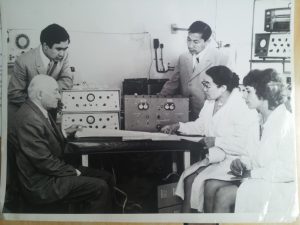 In particular, V.A. Isabaeva and her students in the conditions of the mountain-ecological environment of the Tien Shan, Alai and Eastern Pamirs revealed the ecological and physiological specificity of the development of adaptive reactions of the blood coagulation system in various animal species – inhabitants of the middle and high mountains. The phenomenon of hypocoagulation arising on the effect of alpine hypoxia has been established, which made it possible to recommend new standards associated with
In particular, V.A. Isabaeva and her students in the conditions of the mountain-ecological environment of the Tien Shan, Alai and Eastern Pamirs revealed the ecological and physiological specificity of the development of adaptive reactions of the blood coagulation system in various animal species – inhabitants of the middle and high mountains. The phenomenon of hypocoagulation arising on the effect of alpine hypoxia has been established, which made it possible to recommend new standards associated with
high and low blood coagulation when the body is moved to high altitude conditions.
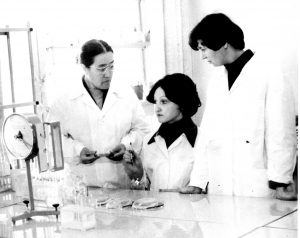

Under the guidance of Professor A.D. Slonim, new provisions have been formulated on the effect of environmental temperature on the animal organism at different levels of physiological integration, highlighting phenomena important for understanding the evolution of thermoregulation.

During this period three volumes of «Ecological animal physiology» (1979, 1981, 1982) were published in the series “Physiology guide” (publishing office «Nauka», USSR), as well as the monograph “The evolution of heat and metabolism regulation in the animal body” ( 1983), «The evolution of thermoregulation» (1986).
Great importance during these years for aerospace medicine were studies on the development of new ways to increase the “altitude” stability of the body. One of such developments was the method of accelerated adaptation, contributing to the achievement of a high adaptive effect to oxygen deficiency in a short time (academician A.A. Aidraliev, doctor of medical sciences A.S.Shanazarov). In addition, a number of scientific and technical programs were carried out, culminating in the development of guidelines for the medical service of the Central Asian military district, eastern border district, Pacific fleet, Arctic and Antarctic research institutes (head is academician A.A. Aydaraliev). In particular, methods for prognostic assessment of the body’s adaptive capabilities and methods for selecting people resistant to oxygen deficiency were developed, a nomogram of changes in a person’s physical performance in the altitude range of 2900-4200 m was proposed. These methods have been shown to be highly effective not only in extreme conditions of high mountains, but also in Antarctica, BAM, arid zone.
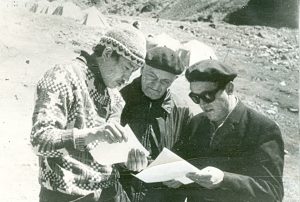
Research continued to establish the pathology of adaptation as a consequence of the complex influence of the mountain environment on individual physiological systems and the body as a whole. The study of the general adaptive syndrome, the features of its course allowed professor M.A. Aliyev and his staff to establish the protective effect of mid-mountain adaptation on pathophysiological models such as acute and chronic focal heart damage.
All of the above work was carried out by the Institute as part of the All-Union Scientific and Technical Program “Homeostasis and Adaptation” and culminated in the development of teaching aids and recommendations implemented in the field of healthcare and the national economy.
In 1988-1993 for the first time in the republic, research in the field of neurophysiology is being intensively developed (corresponding member of the NAS KR S.I. Soroko). A unique laboratory is being created to assess the functional state of the brain and its topographic features, methods for brain mapping (EEC-mapping) and bioadaptive control (Neurofeedback) are being developed, EEG markers for the diagnosis of individual human sensitivity to hypoxia have been allocated.

Today, the work on the assessment and analysis of the plasticity of nervous processes is continued by the students of Professor Soroko S.I. (doctor of medical sciences, G.S. Dzhunusova), which as a result of many years of research revealed the features of the functioning of the neurodynamic mechanisms of the brain, determined the frequency of occurrence of the main types of central mechanisms of brain regulation, established functional changes in the central nervous system in maladaptive states, tested the possibility of their correction by adaptive EEG biocontrols and developed typological EEG standards.
The result of this large and complex work was the creation of an EEG-certification system for high-mountain residents, for which an author’s certificate was received in 2011. These studies open up fundamentally new ways of studying the structure of the interaction of EEG components in children and adolescents to assess the level of morphological, functional and psychophysiological development of the brain in conditions of intensive learning.

Simultaneously with these works, experimental studies on the study of endocrine, immune, morphofunctional, and molecular mechanisms of adaptation to hypoxia are intensively developing. New data were obtained on the role of the neurotransmitter and neurohormonal systems of the brain in ensuring the immune status at different stages of adaptation (doctor of medical sciences, professor J.Z. Zakirov), the features and sequences of structural and ultrastructural rearrangements in the cells of various organs were revealed ( doctor of medical sciences Yu.M. Shidakov), the nature of the molecular modulation of cell and subcellular membranes was established and markers of their damage were identified (doctor of medical sciences, professor V.M.Yakovlev).

For the successes achieved, the Institute employees were awarded with medals and certificates of honor of the USSR and the Kyrgyz Republic, and were awarded the title “Honored Worker of Science of the Kyrgyz Republic”.
In subsequent years, the nature of the relationship between primary agonists and effector cells was established, which manifests itself as rearrangements in the Ca + 2 mobilizing phosphoinosidite system and structural modification of membranes (doctor of medical scienses A.A. Vishnevsky).
A special place in the research of the Institute was occupied by questions of studying the significance of psychophysiological components in ensuring professional activity, as well as assessing the severity and intensity of work in the mountains in order to determine socio-economic compensations. Basic research in this direction made it possible for the first time to characterize the degree of bioclimatic discomfort in the mountainous territories of the republic, to develop a system for quantitatively assessing the severity of labor, to determine psychophysiological and biorhythmological criteria for the degree of fatigue, and to suggest ways to increase the reliability of the human operator. Based on the results of the work, a map of the bioclimatic zoning of the republic was created (doctor of medical sciences, professor A.S. Shanazarov, candidate of biological sciences M.Yu. Glushkov). These materials were the fundamental basis in the preparation of the Law “On state quarantees and compensations for persons living and working in the highlands.”
One of the urgent problems of modern physiology developed at the Institute was the study of the physiological mechanisms of adaptation and regulation of immune homeostasis.
The work carried out by immunophysiologists in mountainous and ecologically unfavorable zones determined sequential changes in the functional activity of T- and B-lymphocytes, T-helper cells and phagocytosis, established the staging of changes in the immune system, on the basis of which a rationale for the use of immunomodulators to normalize the main indicators of immunological reactivity ( Doctor of biological sciences, professor Soburov K.A.).
Based on the results of scientific work, biomedical norms of the basic parameters of immunity and immunogenetic markers of the HLA system in residents of the mountainous regions of Kyrgyzstan were developed, and regulatory documents for approval in the Ministry of Health of the Kyrgyz Republic were introduced, which were subsequently introduced into practice.
A priority topic of applied importance is the assessment of the influence of the mountain environment on the quality of life and biological aging of the population, in which the standard of living is considered not only in relation to natural factors and working conditions, but also factors of social well-being (education, income, health) and demographic characteristics (doctor of medical sciences, professor A. Shanazarov).
New facts have been established, including the potential for human development in the context of the mountain valley, the specifics of the dynamism of the biodemographic system depending on the discomfort of the mountain environment and the relationship between the level of labor intensity and the change in biological age, which are very important for the regional development of the country (candidate of biological sciences N. Ibraimova G.I., candidate of biological sciences Aisaev Sh.Yu.).
Another aspect of scientific work, which is carried out at the Institute and is of paramount importance, is associated with the informatization of society and the creation of a virtual educational environment for evidence-based medicine. Already today, modern information technologies for the educational process are being developed, virtual textbooks are being created that allow interactively teaching modern methods of processing biomedical information (candidate of biological sciences Sorokin A.A.). The implementation of its principles will lead to a more rational use of health care resources, which is very important both for the republic as a whole and for the mountainous regions of Kyrgyzstan.
Over the past decade, the Institute has been integrating into the educational space through deep cooperation with the International School of Medicine (ISM), which has the status of an international higher educational institution and exports higher medical education to the countries of Southeast Asia.
Effective interaction with the ISM and long-term partnerships with the Educational and Scientific-Production Complex “International University of Kyrgyzstan” allowed to increase the effectiveness of scientific research and the quality of educational services and to begin the process of combining with commercial and non-profit organizations into a single complex “Mountain Association”. It is assumed that the activities of the Scientific and Educational Academic Complex will be conducted in several areas, including participation in international programs and projects, the implementation of infrastructure projects for scientific and educational activities, the creation of a modern instrument-analytical base, and the training of highly qualified scientific personnel under the Master and PhD program. It is in these integration processes that the future of physiological and ecophysiological science in Kyrgyzstan is seen.
International scientific contacts are maintained with the Sechenov Institute of Evolutionary Physiology and Biochemistry RAS (St. Petersburg), the Institute of Ecology and Medicine of the Ulyanovsk State University (Ulyanovsk), Novosibirsk State Pedagogical University, the Institute of Human and Animal Physiology of the Academy of Sciences of Kazakhstan, the Department of Physiology and Biophysics KazNU Al-Farabi (Alma-Ata). Eurasian National University named after L.M. Gumilyov (Department of Management and Environmental Protection) (Astana).
Currently, the Institute is implementing the project “The quality of the population and the resource potential of local communities under the conditions of life and the changing impacts of the environmental and climatic factors of the mountains” (2016-2020) (supervisor – doctor of medical sciences G.S.Dzhunusova, state registration number 0007184).
The Institute of Mountain physiology and medicine in different years was headed by:

1954-1971 Doctor of medical sciences, professor, honored scientist of the Kyrgyz Republic Aliyev Medin Adliyevich (pathological physiology)

1971-1983 Doctor of medical sciences, professor, honored scientist of the Kyrgyz Republic, corresponding member NAS KR Isabaeva Valentina Abdaldaevna (human physiology)
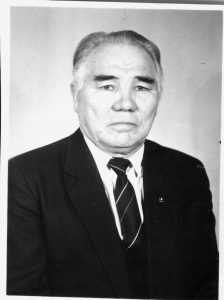
1984-1987 Doctor of medical sciences, professor, honored scientist of the Kyrgyz Republic Alymkulov Dobulbek Alymkulovich (pathological physiology)

1988- June 1993 Corresponding member NAS KR, corresponding member RAS Soroko Svyatoslav Iosifovich (neurophysiology)
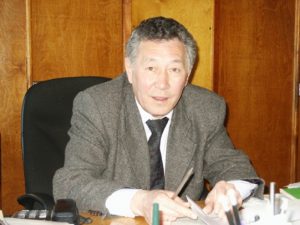
1993- April 2017 Doctor medical sciences, professor, state prize laureate of the Kyrgyz Republic in science and technology Almaz Sogombaevich Shanazarov (physiology)

Since April 2017, the Institute of mountain physiology and medicine has been headed by Doctor of medical sciences, professor Dzhunusova Gulnar Sultanovna (physiology, neurophysiology).

